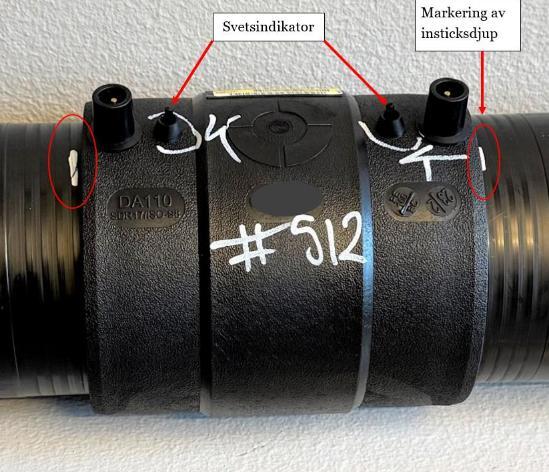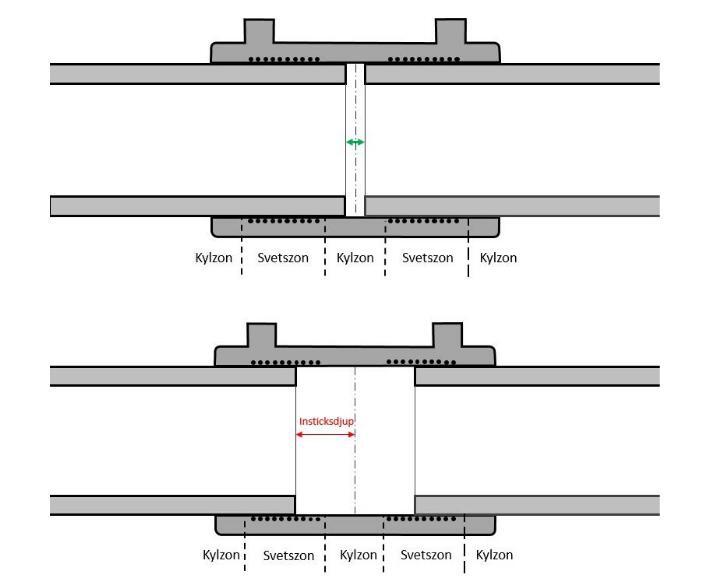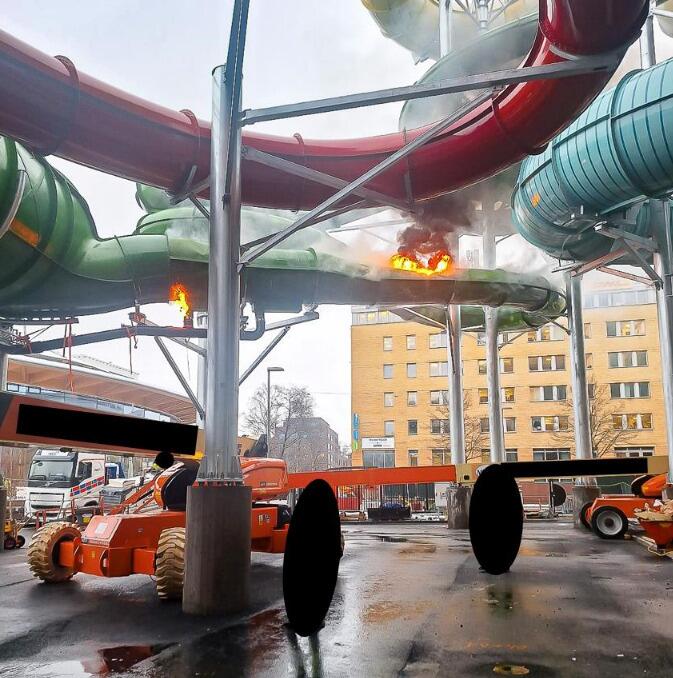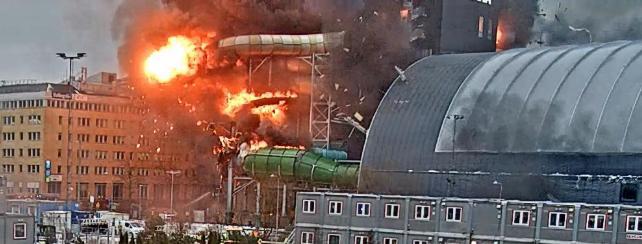Content warning: This post discusses a catastrophic fire and loss of life.
A while back was the one year anniversary of the Oceana fire. Svenska Haverikommisionen (SHK) has since published their final report of their investigation into the accident. Let’s have a look at it!
Note: I will highlight some parts from the final report that I found interesting. I will not give a complete picture of all the details and causes highlighted by the final report, nor give the same relative emphasis on the different findings. Please refer to the official report linked above for a complete picture.
All pictures are taken from the report.
The fire
Workers were joining plastic pipes together using a method called electrofusion. Two plastic pipes are joined in a fitting that contains a coiled wire. By running a current through the wire, the fitting will melt and fuse with the inserted pipes.
 Example of a electrofusion fitting. Translation: Svetsidikator - Weld indicator, Markering av insticksdjup - Marking of fitting depth.
Example of a electrofusion fitting. Translation: Svetsidikator - Weld indicator, Markering av insticksdjup - Marking of fitting depth.
The fire started when fusing water diversion pipes on Rattler, the dark green slide in the picture below. The black water diversion pipes can be seen below Rattler. When the picture was taken, a fire had broken out in the diversion pipes and also spread into the body of Rattler itself.
This led to combustible gases being piped up into the main tower via the Rattler slide, where it accumulated and eventually exploded, spreading the fire to the other slides. One person who was present in the tower died, the cause of death was determined to likely be carbon monoxide poisoning.
Why the electrofusion fitting caught fire
It is important that both pipe ends are inserted with the correct depth into the fitting. If they are inserted too shallow, there will be parts of the heating coil that are not exposed to the pipes that are to be fitted, creating a fire hazard.
 A diagram of when the pipes are at the correct insertion depth (top) and too shallow (bottom). Translation: Kylzon - Cooling zone, Svetszon - Welding zone.
A diagram of when the pipes are at the correct insertion depth (top) and too shallow (bottom). Translation: Kylzon - Cooling zone, Svetszon - Welding zone.
SHK did several experiments where they performed electrofusion with various configurations of fitting depths and fusion times and found that they could in some cases cause a fire when using an improper depth.
 Example of a fire starting in a lab setting during a test carried out by SHK.
Example of a fire starting in a lab setting during a test carried out by SHK.
While the original fitting where the fire started was destroyed, surviving fittings from other parts of the slides showed evidence that in some cases the electrofusion was not carried out with the correct insertion depth. One fitting even showed evidence of a fire breaking out in a small puddle of melted plastic during the fusion. This fire ended up self-extinguishing. The insidious part is that this can occur without anyone outside knowing because the fire is not visible unless you are looking down the pipe.
Lack of safety culture
The report goes into details of the safety culture aspects of the main contractor NCC and one of the subcontractors WhiteWater (a Canadian company that designed and delivered the slides themselves). Some highlights:
-
Time pressure. Two companies specializing in plastic pipe installation were approached but declined due to the complexity of the installation. To avoid further delays, Liseberg and WhiteWater agreed that WhiteWater would be the ones carrying out the electrofusion. No risk assessment was carried out.
-
The risks of fire during electrofusion were not known or listed in any of the documented risk assessments.
-
WhiteWater were unfamiliar with electrofusion and their employees were carrying out the complex installation (elevated position, heavy pipes at awkward angles) having only received a brief explanation of how to work the equipment itself.
-
Not contributing to the fire itself but a sign of problems with the safety culture was a finding that the some of the WhiteWater employees were able to access the work site without having taken the NCC introduction. They did also not use the login system that one is meant to use when entering the work site.
Why post about this?
I’m just a nerd who is really fascinated by reading incident reports. Understanding the sequence of events of the incident itself but also the thorough work trying to understand the root causes beyond just saying ‘human error’ and leaving it at that. It appeals to me.
In this case I get to read a report from something I actually witnessed in real life (if seeing a smoke plume 10km away counts as witnessing something), making it extra interesting. So there you go: a Post about it. I hope you found it interesting too!




